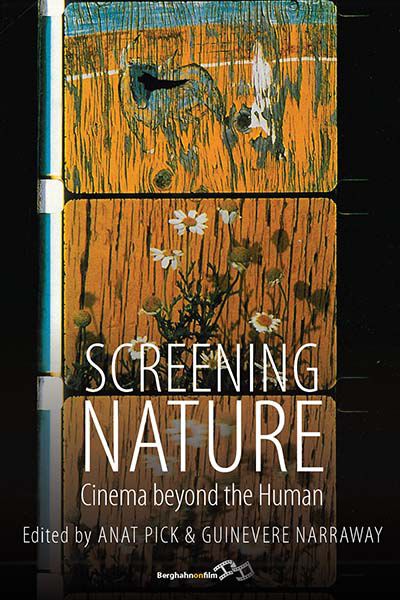Flora, fauna and film are the foci of Screening Nature: Cinema Beyond the Human, published in November 2013. The collection, edited by Anat Pick and Guinevere Narraway, hopes to open the film-viewers’ gaze to the often-overlooked nonhuman living subjects in film. The following is an interview with Pick and Narraway on the mission of Screening Nature, and on the environmental and ecocritical challenges to the discipline of Film Studies.
________________________________
Berghahn Books: What is the idea behind the collection and how did it come about?

Anat Pick and Guinevere Narraway: Screening Nature is one installment in a bigger project to push Film Studies to engage more closely with the natural world and with issues of ecology. It is fair to say that there is currently an “ecological turn” in Film Studies, and the book is part of what we hope will be a significant paradigm shift in the way we think and talk about film. But despite the growing interest in the ecological dimensions of cinema, both in terms of cinema’s representation of nonhuman nature and animals, and in terms of cinema’s ecological impact as a consumer and emitter of fossil fuels, Film Studies departments remain staunchly humanist and anthropocentric, with most courses theorizing and making films with little regard—in the literal sense of the word—to more-than-human concerns.
This is quite simply a selective and inaccurate way of teaching film, since every single frame in virtually every film that has ever existed includes nonhuman beings and things, and is made with and of materials extracted from the environment. There is something extremely blinkered about our vision if we simply ignore those nonhuman elements, a willful ignorance which is ethically as well as ecologically problematic.
BB: How did you select the contributions to the book, and what was important to you in the process?
AP and GN: Guinevere and I come from different methodological and theoretical approaches. Guinevere works in the area of ecocriticism and ecocinema, whereas I come from the area of animal, or critical animal studies (CAS). We knew that the contributions would come from both directions, and that this would distinguish the book from other recent contributions to the field of film and ecology.
As explained in our Introduction, ecocriticism and environmentalism on the one hand, and CAS on the other are two areas that do not always see eye to eye and which sometimes have conflicting conceptions of ethics.
Environmentalists often emphasize biodiversity, populations and species extinctions. They are less concerned with individual animals. Critical Animal Studies is committed to veganism, for example, a commitment that informs Anat’s scholarly work on animals in film.
But there are shared concerns too, which are apparent in a many of the contributions, such as the intersectional understanding of environmental and social justice, and the need to think of the environment not as “out there” in some reified natural realm but as always already integral to the lives we lead, to our politics, our sexualities, our cultures. Another common theme is the attempt to break down the dualisms between nature and culture, human and nonhuman. The collection tackles this via Western and non-Western philosophy, religion, as well as filmmaking practices—such as Rose Lowder’s (whose image is on the book cover)—whose work is itself an ecologically embedded rather than a representational practice, and whose life, we might say, is inseparable from the work.
BB: How do you see the relationship between Film Studies, ecology, and animals develop in the future?
GN: A key element in any future development is “intersectionality,” the idea of the interconnectedness of different forms of oppression and marginalization suffered by different classes and groups of beings. The book’s intersectional bias, the fact that it’s important that we understand the relationship between the domination of the nonhuman and of the human and how this relates to environmental degradation, comes through in some of the individual contributions and in the book as a whole. We feel this is an important subtext to the book.
AP: It takes time to shift perspectives in a well-established discipline, even a relatively young one, like Film Studies. I think we are at the beginning of something, and I only hope that academia proves a bit gutsier than traditional politics that has been woefully inept in its response to the ecological challenge. As Guinevere has just implied, we’d be hard pressed to find solutions to human injustice without making the link to other forms of injustice involving nonhumans. Thus “screening nature” is double-edged: it means expanding our vision to include more than ourselves, and yet it also calls attention to the “screening off,” the systematic bracketing and expunging of the nonhuman on which a certain fantasy of the human unhappily persists.
____________________________________________
Anat Pick lectures in Film Studies at Queen Mary, University of London. Her book Creaturely Poetics: Animality and Vulnerability in Literature and Film was published by Columbia University Press (2011).
Guinevere Narraway lectures on cinema at the University of Tasmania, Hobart, Australia. Her research focus is ecocriticism and moving image culture.
